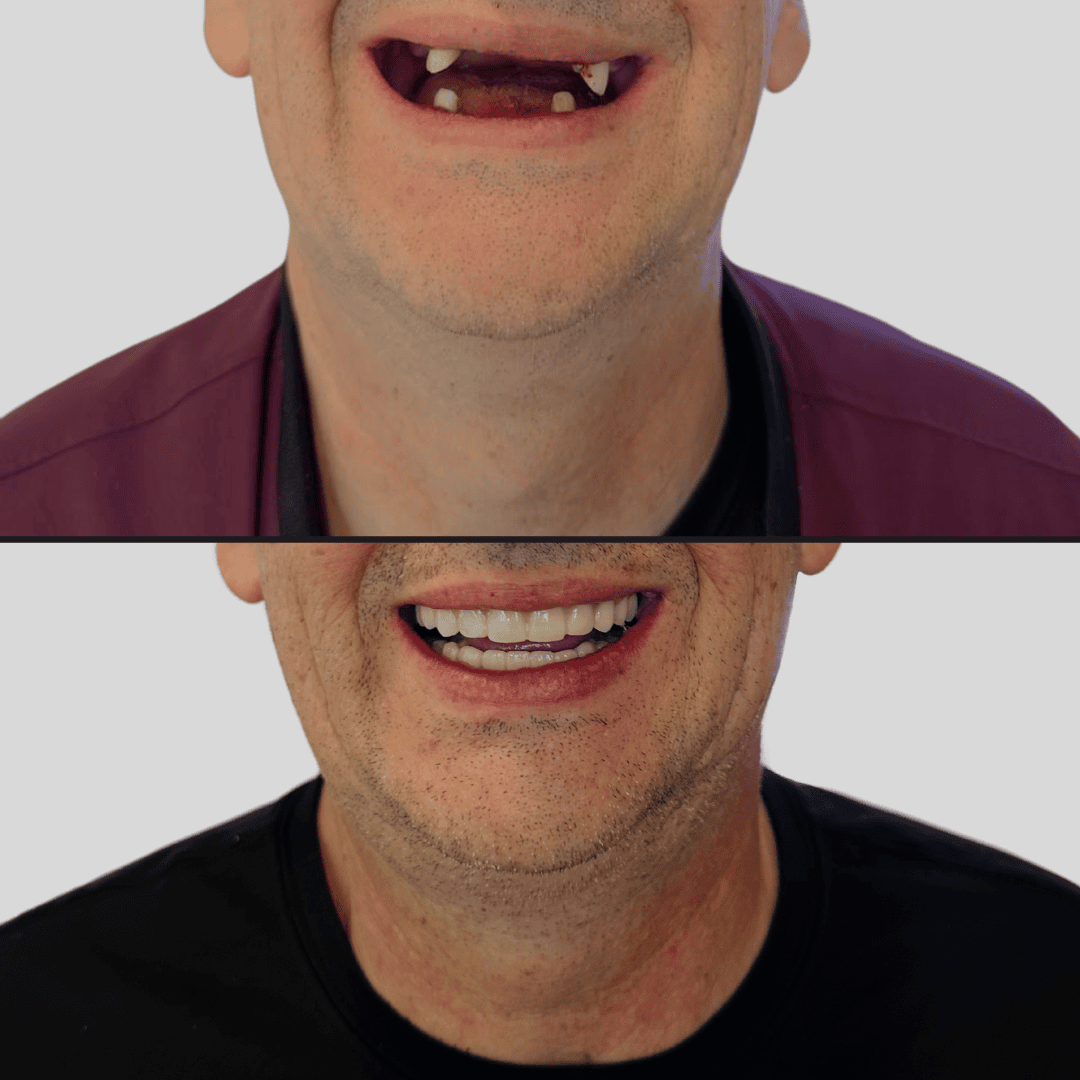All-on-4 vs. Snap-On: Understanding the Differences and Indications for Each Procedure
- Implant-supported: All-on-4 uses dental implants as a foundation. Typically, four strategically placed implants support a complete set of prosthetic teeth.
- Permanent Solution: All-on-4 provides a permanent, fixed solution for those who have lost most or all of their teeth. These prosthetic teeth look and function like natural teeth.
- Indications: All-on-4 is ideal for individuals with extensive tooth loss or those experiencing severe dental issues, such as periodontal disease. It offers a stable and durable solution for those seeking a long-term dental restoration.
- Removable: Snap-On dentures are removable, meaning they can be taken out for cleaning and maintenance.
- Attachment System: Snap-On dentures are held in place by attaching to dental implants or remaining natural teeth using snaps or clips.
- Indications: Snap-On dentures are suitable for individuals who may not be candidates for All-on-4 due to factors like insufficient bone density or gum health. They provide a removable and more affordable option for those needing dental restoration.

Schedule an Appointment
New Patient Form
- Stability: All-on-4 implants offer exceptional stability and support for the prosthetic teeth, making them feel and function like natural teeth.
- Durability: With proper care, All-on-4 dental implants can last a lifetime, providing a long-term solution for tooth loss.
- Enhanced Functionality: Patients can enjoy improved biting and chewing capabilities, allowing them to eat a wide range of foods comfortably.
- Preservation of Bone Structure: The implants stimulate the jawbone, preventing bone loss and maintaining facial contours.
- Improved Aesthetics: The prosthetic teeth in All-on-4 implants are custom-made to match the patient's natural teeth, enhancing their smile and overall appearance.
- Improved Stability: Snap-On dentures are more stable than traditional removable dentures since they attach securely to dental implants.
- Easy Maintenance: They are removable, making them easier to clean and maintain than fixed dental prosthetics.
- Cost-Effective: Snap-On dentures are often more budget-friendly than full sets of dental implants and can be a cost-effective option for patients.
- Preservation of Bone: Like dental implants, the implants used with Snap-On dentures stimulate the jawbone, preventing bone loss.
- Adjustability: Snap-On dentures can be easily adjusted or replaced if necessary.

New Patient Form
The Process of All on 4 and Snap On
The "All-on-4" and "Snap-On" treatment is an effective process that requires a total of three visits and is completed over a period of three to four months. This revolutionary dental technique offers you the opportunity to regain a radiant and functional smile. During the treatment, a set of fixed or semi-removable teeth is implanted, allowing you to eat without restrictions and smile with complete confidence. Upon completing this process, you will experience a significant improvement in your quality of life, regaining the ability to enjoy your favorite meals and display a confident smile on any occasion. Investing in your oral health and well-being is worthwhile.
- Evaluation: The first step is a comprehensive dental examination and consultation. During this appointment, the dentist will assess the patient's oral health, take X-rays, 3D CT Scan and discuss the patient's dental history and goals.
- Treatment Planning: Based on the assessment, the dentist will create a personalized treatment plan. This plan will outline the number of implants needed and their exact placement. The goal is to achieve optimal stability and support for the dental prosthesis.
- Preparation: Before the implant surgery, any remaining teeth that need to be removed will be extracted. If there are any existing dental infections or gum disease, these will be treated as well.
- Implant Placement: On the day of the procedure, dental implants are surgically placed into the jawbone. The All-on-4 and Snap On technique typically involves the placement of four dental implants in specific positions to maximize stability and support. This reduces the need for bone grafting in cases where there is some bone loss.
- Temporary Prosthesis: Immediately after the implant placement, a temporary dental prosthesis (often a bridge or denture) is attached to the implants. This temporary prosthesis allows the patient to leave the dental office with functional teeth on the same day as the surgery.
- Healing and Osseointegration: Before making the final prosthesis, it's crucial to allow time for the dental implants to fully integrate with the jawbone. This healing period usually takes 3-4 months, during which the temporary prosthesis is in place.
- Impression Taking: Once the healing and integration of implants are confirmed, a more detailed and precise impression is taken. This secondary impression captures the specific contours of the gums, implants, and surrounding structures. In addition to the impressions, a bite registration is taken to record how the upper and lower jaws fit together. Using the impressions and bite registration, the dental laboratory, in coordination with the dentist, designs the final prosthesis. The design takes into account the patient's bite, aesthetics, and functional requirements.
- Fabrication: In many cases, the final prosthesis consists of a metal framework for strength and durability. This framework is designed to fit precisely over the dental implants.
- Try-In: Before the final prosthesis is permanently fixed in the patient's mouth, a try-in is conducted to ensure that it fits properly, aligns with the patient's bite, and meets aesthetic expectations.
- Final Placement: Once the try-in is successful, the final prosthesis is securely attached to the dental implants. This is typically done using screws or other retention mechanisms.
- Regular check-ups with the dentist are essential to ensure the implants and prosthesis are functioning properly and to address any concerns or issues that may arise.
Materials Used in All-on-4 Implants and Snap On Denture.
- Titanium: Titanium remains the gold standard for dental implant materials due to its exceptional biocompatibility and ability to integrate with bone tissue. It's highly resistant to corrosion and has been used in dental implants for decades.
- Zirconia: Zirconia implants have gained popularity for their aesthetic appeal, as they can resemble the color and translucency of natural teeth. They are also biocompatible but may not be as versatile as titanium in certain clinical situations.
Dental Prosthesis: In the second phase of Snap-On or All-On-4 procedures, fixed or semi-removable prostheses are placed on the implants. These prostheses are made of various materials, depending on the number of implants and the type of implant connection system. Here are some options for your consideration.
- Acrylic: It is a durable and economical material. Acrylic dentures are easy to adjust and repair, but they may be less aesthetic than other materials.
- Metal-acrylic: This prosthesis combines a metal framework with an acrylic covering. It is strong and durable, but it may be less aesthetic than other options.
- PMMA (polymethyl methacrylate): It is a high-quality acrylic material used in dental prostheses. It has similar properties to acrylic but with greater wear resistance and better aesthetics.
- Zirconia: It is a strong and aesthetic ceramic material. Zirconia prostheses are durable and have a natural appearance, but they may be more expensive.
Take Care of Your Smile and Your Wallet: Save up to 70% off on Dental Implants
Schedule your appointment today and take the first step towards a brighter smile!
 Skip to main content
Skip to main content
